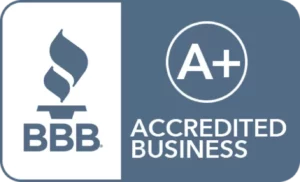As you know, an Individual Retirement Account (IRA), is a tax-advantages plan that allows anyone with income to save for retirement. The great thing about that is that there is generally no annual filing requirements. However, Self-Directed IRAs are a little different, because of how they are structured. Further, depending on the types of investments you make, you could be subject to a specific tax. In most cases, only a simple information form must be submitted to the IRS. Lastly, when you take distributions from an IRA, they must be reported as well.
Types of Self-Directed IRA LLC Plans
Most people who self-direct their IRA, utilize the LLC structure. A limited liability company gives the IRA owner protection and the ability to invest how he or she wants. Your Self-Directed IRA owns the LLC. You, the IRA owner, acts as trustee of the plan. This allows you to make investments when and how you see fit. There’s no reason to ever ask a custodian permission before making an investment. You do have too choices when it comes to deciding on a Self-Directed IRA – traditional or Roth.
Traditional IRA
A traditional IRA is the more well-known of the two plans. Just like a traditional 401(k) you can save with at your job, a traditional IRA allows for tax-deferred savings. Plus, any amount contributed is not counted towards your tax bill. They are funded with pretax funds, thus lowering your tax bill every year you contribute. Of course, taxes will be due in the future. In fact, taxes are due any time you withdraw funds from the plan. Withdrawing from the plan before age 59 1/2 also comes with a “tax.” You must pay a 10% early withdrawal penalty.
Assuming you don’t owe a penalty, your distribution is added to your 1040 when you file your taxes. The entire amount of the distribution will be taxed at your current tax rate.
Roth IRA
A Roth IRA is taxed completely different than that of a traditional plan. There is no upfront tax deduction. Roths are funded with after-tax funds. However, all qualified distributions are tax free. To be qualified, the Roth must be open for at least five years and you must be at least age 59 1/2. If a distribution is taken before these milestones, you will be taxed and penalized.
Contributions to a Roth may be withdrawn at any time without tax. However, earnings are taxable if occurring outside the above parameters. Although no taxes are due, you must still report qualified Roth IRA distributions when filing your 1040.
As you can see, your tax bill is much lower when you withdraw funds from a Roth IRA. If you don’t mind paying taxes upfront, the Roth is a much better plan when it comes time to withdraw!
Two Types of LLCs
There are essentially two types of LLCs – single member and multi-member. Depending on what type of company your IRA owns, the annual filing requirements from your Self-Directed IRA may differ. However, what is the difference between the two types of LLCs? It comes down to what types of plans are held in the IRA and who contributes to it.
Single Member LLC – This is an LLC where there is only one set of IRA funds in the company. The funds can be traditional or Roth, but not both. A co-manager is allowed, however, he or she is not allowed to contribute to the IRA held by the LLC.
Multi-Member LLC – This is an LLC that has multiple sets of IRA funds in the plan. For example, if one person contributes to both a traditional and Roth IRA in the same company. Alternatively, if more than one person, such as a husband and wife, contribute IRA funds, it will be considered a multi-member LLC.
Tax Filing Requirements with UBTI/UDFI
While most IRAs are exempt from paying taxes each year, there are two types of taxes that may be due. The first is UBTI, Unrelated Business Taxable Income. This is defined as “gross income derived by any organization from any unrelated trade or business regularly carried on by it.” Essentially, if your Self-Directed IRA owns a business, such as a restaurant, you will owe UBTI taxes.
Moreover, you may owe UBTI with certain real estate investments. Rental properties generate passive incomes and will not be subject to the tax. However, if you buy and sell several properties throughout the year, you may be subject to the tax. There is no concrete rules as to when this occurs however. It’s simply up to the IRS. Essentially, if you only do one to three transactions per year, you should be safe from the tax. However, performing ten fix and flips annually may be considered a business and subject you to the UBTI tax.
The other type of tax is called UDFI, or Unrelated Debt-Financed Income. This is a type of UBTI when using debt to purchase a property. Basically, if you purchase a property with IRA funds in conjunction with a loan, you will owe UDFI. Any income generated by the property will be taxable, to a certain extent. For example, if you take a nonrecourse loan that purchases 20% of the property, an equal percentage will be taxable due to UDFI.
Filing Tax Returns
The tax filing requirements require you to file one form another. It all depends what type of LLC you have and whether or not you owe UBTI/UDFI taxes.
No UBTI/UDFI Taxes Due
If you are single member LLC with no UBTI or UDFI taxes due, you do not have to file any tax forms with the IRS. However you do need to provide them with a valuation of the LLC and its assets. Generally, your custodian will provide you with the valuation form (Form 5498). You fill it out and your custodian will usually file it for you. This form will show what is owned by your Self-Directed IRA and how much it is worth.
If you have a multi-member LLC, you are required to file a Form 1065 with the IRS. However, no taxes are due with this form. As per the IRS: “Partnerships file an information return to report their income, gains, losses, deductions, credits, etc.“
UBTI/UDFI Taxes Are Due
Aside from distributions, UBTI and UDFI are the only times your Self-Directed IRA LLC will owe taxes in a given year. If you do owe one of these, you need to file Form 990-T. These taxes must be paid each year they are due. Further, they must be paid from IRS funds.
Of course, it’s best to avoid transactions that incur taxes to take full advantage of the benefit of the plan. Any time taxes need to be paid, this lessens the power of the plan.
Conclusion
The annual filing requirements for a Self-Directed IRA are not too bad. You must be mindful of the UBTI and UDFI rules when investing with your IRA. Of course, when withdrawing from the plan, you must make note of it on your personal tax return. Taxes are due on traditional plan withdrawals, while no taxes are due on Roth distributions.
Aside from any taxes being due, you just need to file an information form with the IRS. Generally, this will be handled in conjunction with your IRA custodian. Make sure all filings are done in a timely matter. You don’t want to risk losing the tax advantages of your IRA by failing to meet the requirements set forth by the IRS.











